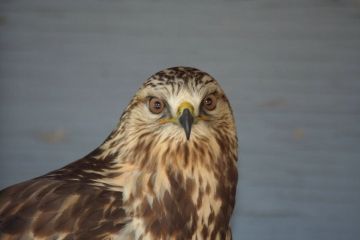South Arm Marshes Wildlife Management Area

Park Size: 937 hectare
Park Amenities:
The 937 hectare (2316 acre) wildlife management area consists of mud flats, intertidal marshes, wetlands, islands, bogs, drainage channels, sand bars and wetland vegetation like reeds, cattails, sedges, rushes.
The area covered by the wildlife management area includes Ladner Lagoon, Ladner Marsh and the islands of Woodward, Barber, Duck, Rose, Kirkland, Gunn and Williamson. The islands of Kirkland, Gunn and Williamson are farmed and cultivated for food therefore sustaining the wildlife and birding populations in the region. Because of the importance of the program the islands are off limits to watercraft and visitors and are considered protected islands.
Land access is best via Lander Marsh and Ladner Lagoon. In Ladner Marsh there is a loop trail located on the banks of the storm water treatment marsh with a boardwalk section and covered viewing tower. And in Ladner Lagoon there is a perimeter dyke trail connecting to Ladner Harbour Park.
The more popular activities enjoyed when exploring the wildlife area include walking, fishing, canoeing, kayaking, birdwatching and boating. Accessing the wildlife area is best by watercraft. Boat launches located on the Fraser River provide the best access points.
South Arm Marshes Wildlife Management Area (SAMWMA) is part of an even bigger picture of protected wetlands, marshes and islands. The sanctuary neighbors other wildlife protected areas including the Alaksen National Wildlife Area and the George C. Reifel Migratory Bird Sanctuary.
The Fraser River wildlife management area provides a feeding, nesting and resting habitat for residential and migratory birds. The Fraser River estuary is one of the most important habitats in British Columbia for protecting marine, shore, predator and song birds.
The Sturgeon Bank, Boundary Bay and the South Arm Marshes Wildlife Management Area are recognized internationally as Western Hemisphere Shorebird Reserve habitats. The SAMWMA protects some of the highest populations of waterfowl and shorebirds in Canada. In fact... it is said that more waterfowl migrate and winter in the region than anywhere else in Canada.
Some of the bird sightings in the South Arm Marshes Wildlife Management Area include the Bald Eagle, Northern Harrier, Red-tailed Hawk, Sharp-shinned Hawk and Cooper's Hawk, Peregrine Falcon, Common Loon, Red-throated Loon, Horned Grebe, Red-necked Grebe and Western Grebe, Snow Goose, Great Blue Heron, Marsh Wren, Red-winged Blackbird and Song Sparrow, Mallard, Northern Pintail, Goldeneye, Ruddy Duck, Green-winged Teal and American Wigeon.
Other wildlife sightings in the region of the non birding variety include beavers, muskrat. coyotes, raccoons, minks, seals and California Sea Lions. And... the intertidal marsh and channels provide sanctuary for spawning fish like Spring, Pink, Chum and Chinook Salmon.
Explore South Arm Marshes Wildlife Management Area (SAMWMA) near Delta, Ladner, and the Tsawwassen BC Ferry Terminal in British Columbia, Canada
Address:
How To Get ToSouth Arm Marshes Wildlife Management Area
:Best access is via watercraft from a boat launch on the Fraser River.
From Delta, BC travel south on 112th Street and turn right on 72nd Avenue. Next take the Hwy 91 exit onto Annacis Hwy and travel south. At Hwy 99 merge right and travel towards the ferry. Continue west on Hwy 99 and take Exit 28 to Tsawwassen. Take the Hwy 17 exit. and travel south and take a right on Ladner Trunk Road. Next take a right on Elliott Street and a second right on River Road. Continue on River Road to Ferry Road and park.
